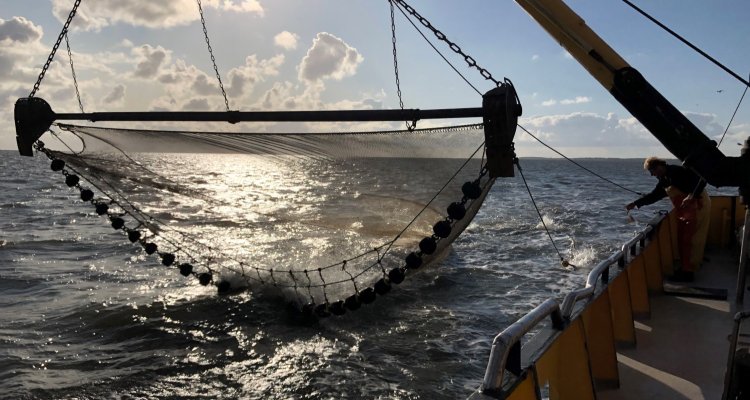
News
Management scenarios for shrimp fishing
Shrimp fishing faces several challenges, with different management choices on the table. In a scenario study, Wageningen University and Research investigated how these choices determine the ecological impact and the economy of shrimp fishing. An optimal choice does not exist, but depends on the value given to the different aspects of fishing.
For the study, Wageningen Marine Research and Wageningen Economic Research calculated the ecological and economic consequences of different management scenarios. One scenario in which the effort is limited by a reduction in travel time per week and/or a temporary stop in summer and/or winter, a second scenario with the closure of areas, combined with the buying out of permits and a third involving only the buying out of permits. All three scenarios lead to a reduced fishing effort.
How to determine the ecological effects
For the ecological effects, a model was used that simulates the effort, shrimp landings and bycatch of undersized shrimp over a period of about 20 years based on changes in fishing effort and the resulting catches. In addition, the effects on birds (diving ducks and surface foragers such as gulls and terns) and unwanted bycatch (fish and bottom-dwelling species) were determined based on the model outputs connected to and data from other field research and from the literature.
Different outcomes
The direct socio-economic effects have been determined on the basis of a calculation model and the historical data of the shrimp fleet for the period 2016-2021. The ecological model and the socio-economic calculations are based on the same management scenarios, but give a different type of outcome: while the ecological model covers long-term effects, the socio-economic calculations cover short-term effects.
Ecologic effects of reduction in fishing effort
In the short term, a decrease in fishing effort directly leads to less seabed disturbance, less fuel consumption and, in turn, less greenhouse gas emissions, as well as to less disturbance of diving ducks and unwanted bycatch of fish and bottom-dwelling species. This is if there is less overlap in space and time between shrimp fisheries and these species. It does not make a difference whether the decrease in fishing effort is due to a shorter fishing week, a smaller number of vessels or seasonal closures.
In the long term, the effect on the shrimp population, and, in turn, also on the seasonal fishing pattern, depends on the magnitude of the reduced fishing effort. If fishing effort is somewhat reduced, more shrimps can survive to grow larger, and yearly landings can increase. At a certain level of fishing effort reduction, the seasonal size composition and timing of peaks of marketable shrimp changes. At sufficiently reduced fishing mortality, the density of shrimp in the sea increases, leading to slower shrimp growth - if this is not compensated for by an increased natural mortality from predators, i.e., whiting. (The effect of a varied natural mortality was not included in the study.) Higher densities of smaller shrimp will imply more discards of undersized shrimp. The shrimp fishery sector adapts its seasonal fishing effort to the dynamics of the shrimp population, i.e., availability of marketable shrimp.
A reduced fishing effort can therefore also lead to changes in the timing of shrimp peaks. Closing areas can bring benefits to birds and bycatch species – the extent to which depends on the choice of area location. For example, if areas where diving ducks occur in the winter months are closed, then that will be beneficial for these birds.
Manner of effort reduction decisive for socio-economic effects
For the socio-economic effects, how the effort reduction is achieved determines the consequences. If the fleet remains the same, all fishermen can continue to fish, but they work and earn less and it is questionable whether the fishermen would then still want to continue fishing. In the event of a buy-out, total employment will decrease, but fishing will yield more for the remaining fishermen. The effects on the buyers of the shrimp are the same in both cases.
No predictions, but potential directions
The results of the analyses outline effects, as many details of the management scenarios have not yet been filled in. Therefore, the results are not predictions of the future, but rather indicate the possibilities in terms of development direction. In this way, the results can support the dialogue between stakeholders by looking at the consequences of different options side by side and enabling a better balancing between the different interests. The report also provides a starting point for the methodology that can be used. In addition to average outcomes, the risks in the form of possible undesirable side effects (such as the economic results in specific years) will also play an important role and the current situation in the fisheries and the fish cluster.